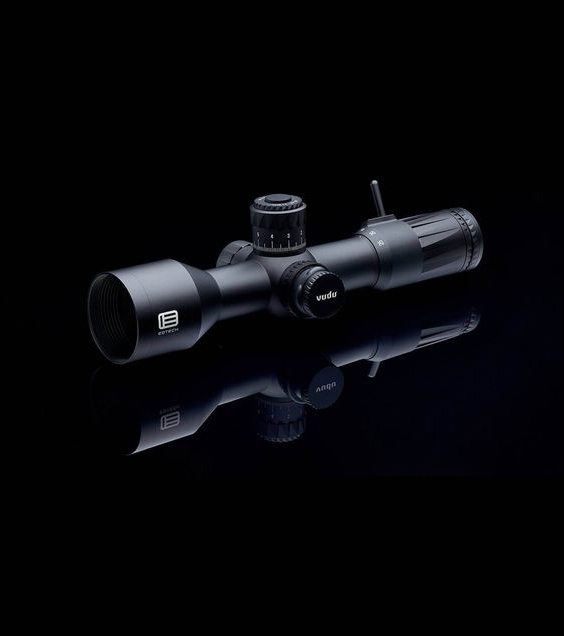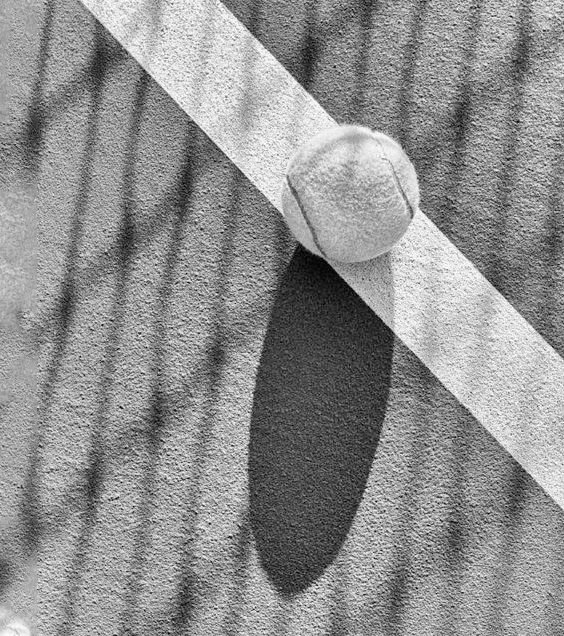
Riflescopes, as the name suggests, are optical devices mounted on rifles to improve aim and accuracy. They work by magnifying the target and superimposing a reticle (aiming point) onto the magnified image, helping the shooter to align the firearm with the target more accurately. This combination of magnification and precision targeting makes riflescopes an essential tool for hunters, sport shooters, and military personnel.
A riflescope primarily consists of an objective lens, erector lens, magnifying lens, and an ocular lens. The objective lens is positioned at the front and captures the light, which then passes to the erector lens that flips the image right-side up. The image is then magnified by the magnifying lens. Finally, the ocular lens near the shooter's eye presents the magnified image for clear viewing.
The reticle, or the aiming point, is usually represented as crosshairs, but there are other types like duplex, mil-dot, bullet drop compensator (BDC), and many more, each tailored for specific purposes or ammunition types. The reticle can be placed in front of or behind the magnifying lens, affecting whether it maintains its size relative to the target or changes with magnification adjustment.
Riflescopes come with different magnification powers. Some scopes offer fixed power, meaning that the magnification level cannot be adjusted. On the other hand, variable power scopes allow the shooter to adjust the magnification, offering flexibility in viewing targets at different distances.
An important aspect to consider when choosing a riflescope is the eye relief, which is the distance between the shooter's eye and the eyepiece where the shooter can clearly see the entire field of view. Longer eye relief allows the scope to be mounted further forward on the firearm, which can be beneficial in preventing the recoil of the gun from causing the scope to hit the shooter.
Riflescopes vary widely in their features, configurations, and prices, ranging from basic models suitable for casual target shooting to sophisticated designs for long-range hunting or tactical shooting. Advanced scopes may offer features like weatherproofing, illumination for low-light conditions, and complex reticles for improved accuracy with specific types of ammunition.
However with all these basics this article is aimed for advanced user, where we will more complex and detailed aspects of technology and its usage. As well as we will discuss top 7 riflescopes currently present in the market.
Diving Deeper: Advanced Topics in Riflescopes
Riflescopes are sophisticated pieces of equipment that can drastically improve the accuracy and precision of a shooter. While the basic understanding of their functioning and usage is crucial, there's a realm of advanced knowledge that can help serious shooters, enthusiasts, and professionals get the most out of their equipment.
These advanced topics delve deeper into the intricacies of riflescope technology, offering insights into lens quality, reticle design, turret adjustments, parallax correction, and much more. They explore the cutting-edge developments in riflescope technology, such as first versus second focal plane designs, sophisticated reticle systems for bullet drop compensation, and advanced weatherproofing techniques.
This also includes understanding the different types of scopes available, such as thermal and night vision scopes, that use technology to provide visibility under conditions that would be challenging for traditional scopes. Similarly, long-range scopes and those specially designed for specific purposes like tactical or competition shooting, each have their unique features and nuances that require advanced understanding.
Furthermore, the utilization of riflescope accessories like sunshades, lens covers, and scope mounts can significantly enhance the performance and durability of the scope. A deep dive into these accessories and their correct usage forms an important part of advanced riflescope knowledge.
Finally, mastering the art of zeroing the scope, making accurate windage and elevation adjustments, and understanding the impact of environmental factors on shooting accuracy are some of the practical skills that are essential for anyone looking to master the use of riflescopes.
Lets Look into these advanced option one by one;
Advanced Reticle Designs
In the world of riflescopes, the reticle, often known as the crosshair, plays a pivotal role in targeting and shooting accuracy. While the traditional crosshair design is still prevalent, advanced reticle designs have emerged to cater to the increasing demands of precision shooting, hunting, and tactical operations.
One of the most popular advanced reticles is the Mil-Dot reticle. It features a series of dots along the crosshairs that represent a certain amount of angle, measured in milliradians (mrad), from the center of the crosshair. This design allows shooters to estimate the distance of their target, adjust for bullet drop, and compensate for windage, making it highly valuable for long-distance shooting.
Bullet Drop Compensator (BDC) reticles are another advancement in reticle design. They incorporate different aiming points on the vertical crosshair that correspond to the bullet's expected drop at specific distances. This design allows for quick and accurate shooting at varying distances without needing to adjust the scope's elevation settings. However, BDC reticles are usually calibrated for a specific type of ammunition, so they may not be as accurate when used with different ammunition.
The Horus reticle is a grid-style reticle that provides an extensive array of aiming points for both elevation (bullet drop) and windage (wind effect) compensation. This advanced reticle allows for faster and more accurate adjustments, particularly in long-range and tactical shooting scenarios.
First Focal Plane (FFP) and Second Focal Plane (SFP) reticles represent advancements in reticle placement within the scope. In FFP scopes, the reticle size changes with magnification, keeping the reticle's subtensions accurate at all magnification levels. This means the distance between reticle markings remains consistent relative to the target regardless of the magnification setting. In contrast, SFP reticles remain the same size regardless of magnification, meaning the subtensions only represent accurate distances at a specific magnification level.
Illuminated reticles, which light up the crosshair or other aiming points, provide enhanced visibility in low-light conditions. These reticles can be particularly useful during dawn and dusk when natural light is limited.
Lens Coatings
The lens is arguably one of the most critical components of a riflescope, as it directly influences the image quality and the overall shooting experience. To enhance the performance of these lenses, various types of coatings are applied that offer a range of benefits, from improving light transmission to protecting the lens from damage.
Anti-Reflective Coatings: One of the primary functions of lens coatings is to reduce reflection. When light hits the lens, some of it is reflected away, reducing the amount of light that passes through the lens and reaches the eye. This can lead to a darker image with lower contrast. Anti-reflective coatings minimize these reflections, allowing a higher percentage of light to pass through the lens and resulting in brighter, clearer images.
Multi-Coatings: A lens can be coated multiple times with anti-reflective coatings. Multi-coated lenses have several layers of coatings applied, and fully multi-coated lenses have multiple layers applied to all air-to-glass surfaces. Each additional layer improves light transmission, with fully multi-coated lenses offering the highest levels of brightness and contrast.
Protective Coatings: Some lens coatings are designed to protect the lens itself. These can make the lens more resistant to scratches, help shed water, and prevent fogging. Protective coatings can significantly enhance the durability and longevity of the riflescope, particularly in harsh environmental conditions.
Phase Correction Coatings: These are used on the prism in roof prism binoculars to enhance resolution, contrast, and color fidelity. They correct the phase shift that occurs as light passes through the prism, ensuring that the different color wavelengths focus on the same plane and result in a clearer, more detailed image.
Dielectric Coatings: These are high-reflectivity coatings used on the prism in binoculars and scopes to ensure maximum light transmission, particularly beneficial for low-light conditions.
Understanding the types of lens coatings and their benefits can help in making an informed decision when purchasing a riflescope. Whether it's for hunting at dawn or dusk, observing wildlife, or precision shooting, the right lens coating can make a significant difference in your viewing experience.
Understanding and Adjusting Parallax
Parallax is a term that often comes up in discussions about riflescopes, particularly those designed for long-range shooting. Understanding what parallax is, why it matters, and how to adjust for it can significantly improve shooting accuracy.
Parallax occurs in a riflescope when the target image and the reticle are not on the same focal plane. This results in an apparent shift in the position of the target relative to the reticle when the shooter's eye moves off-center from the scope's eyepiece, even if the rifle remains steady. This can lead to inaccurate aiming and shooting, particularly at long distances.
Most riflescopes designed for shooting at shorter ranges are factory-set to be parallax-free at a specific distance, often 100 yards. However, for scopes used for long-range shooting, or for shooting at varying distances, adjustable parallax becomes a critical feature.
Here's how to adjust for parallax:
Identify the Parallax Adjustment Control: In many riflescopes, this is a third turret on the side or the front of the scope, separate from the windage and elevation turrets. In some scopes, it might be a ring around the objective lens.
Focus on the Target: Aim the rifle securely at your target.
Adjust the Parallax Control: Without moving the rifle, gently shift your eye left and right or up and down behind the scope's eyepiece. If the reticle appears to move relative to the target, adjust the parallax control.
Repeat Until Parallax is Eliminated: Keep making slight adjustments and checking until the reticle no longer shifts position relative to the target when you move your eye.
Refine the Focus: Once parallax is eliminated, you may need to slightly adjust the eyepiece focus to ensure the reticle is sharp and clear.
Understanding and adjusting for parallax can significantly enhance the accuracy of long-range shooting. By bringing the target image and reticle onto the same focal plane, shooters can ensure their aim is precise, regardless of slight shifts in eye position. It's a skill that can take some practice to master, but it's well worth the effort for anyone serious about precision shooting.
Ballistics and Riflescopes
When it comes to shooting, understanding the concept of ballistics - the science of the motion of projectiles - is crucial. Ballistics and riflescopes are intricately linked, as the information about the trajectory of bullets significantly affects how you aim with a riflescope.
Ballistics can be divided into three categories: internal, external, and terminal ballistics.
Internal Ballistics: This refers to the processes happening within the firearm, from the ignition of the propellant to the bullet exiting the barrel. Factors such as the type and amount of powder, the bullet's seating depth, and the barrel's length and rifling all affect the bullet's speed and stability as it leaves the barrel.
External Ballistics: Once the bullet leaves the barrel, it's the realm of external ballistics. This is what most people refer to when talking about ballistics in the context of riflescopes. It involves the bullet's flight path from the barrel to the target. Factors affecting the bullet's trajectory include gravity, air resistance, wind, and the bullet's velocity, mass, and shape.
Terminal Ballistics: This refers to what happens when the bullet hits the target. While not directly related to riflescopes, it's still an essential part of the overall understanding of shooting.
Riflescopes come into play primarily in the area of external ballistics. The scope's adjustments for windage (left-right) and elevation (up-down) are used to compensate for the effects of wind and gravity, respectively, on the bullet's flight path.
Moreover, advanced reticle designs like BDC (Bullet Drop Compensator) or mil-dot reticles allow shooters to compensate for bullet drop over different distances without adjusting the scope's settings. These reticles have marks that represent the bullet's drop at specific distances based on a predefined bullet velocity and ballistic coefficient (a measure of the bullet's ability to overcome air resistance).
Riflescopes with adjustable parallax can help ensure the reticle and the target are on the same focal plane, eliminating potential aiming errors, particularly at long ranges.
In summary, understanding ballistics and how it interacts with your riflescope is key to improving shooting accuracy and precision. It allows you to make informed adjustments to your riflescope and better interpret what you see through the lens. By combining this knowledge with practice, you can master the art of precision shooting.
Advanced Scope Mounting Techniques
Mounting a riflescope correctly is crucial to ensure its optimal performance and accuracy. While basic scope mounting involves aligning the scope with the rifle and securing it using rings, advanced mounting techniques offer additional considerations to further enhance shooting accuracy and ease of use.
Here are some advanced scope mounting techniques:
Leveling the Scope: This is vital to ensure that the crosshairs are perfectly vertical and horizontal, which is particularly important for long-range shooting. A poorly leveled scope can lead to a canted reticle, causing left or right shooting errors. This is because, when you adjust the elevation for longer ranges, if the scope is not level, you're also unintentionally adjusting the windage. To level the scope, you can use a bubble level or a plumb bob method.
Eye Relief and Positioning: Proper eye relief and scope positioning allow for a comfortable and complete view through the scope. Too close, and the recoil could cause the scope to hit your eye; too far, and you'll have a reduced field of view. Advanced shooters often position the scope based on their preferred shooting position to ensure optimal comfort and eye relief.
Lapping Rings: This involves using a lapping tool and compound to polish the inside of the scope rings, ensuring they have maximum contact with the scope tube. This can improve the stability of the scope and reduce the chances of it shifting under recoil. However, it should be done carefully to avoid damaging the scope or rings.
Torquing Screws: Using a torque wrench to tighten the screws on the scope rings can ensure they are secured properly. Over-tightening can damage the scope, while under-tightening can cause the scope to move. Many manufacturers will specify a torque value for their products.
Using a Boresighter: After mounting the scope, a boresighter can be used to align the rifle bore with the scope's reticle. This can save time and ammunition when zeroing the scope at the range.
Bedding the Scope Base: In some cases, particularly with older rifles, the scope base may not fit perfectly flush with the receiver. Bedding the base using a compound like epoxy can help ensure a perfectly fitted and secure base.
By employing these advanced scope mounting techniques, shooters can ensure their riflescope performs consistently and accurately, enhancing their overall shooting experience. As always, patience, practice, and attention to detail are key when working with these techniques.
Tactical Vs. Hunting Scopes
Riflescopes serve as critical tools for both hunting and tactical situations, enhancing a shooter's ability to accurately hit a target at distance. However, not all scopes are created equal, and different situations call for different types of scopes. In this article, we'll explore the key differences between tactical and hunting scopes and how those differences affect their usage.
Tactical Scopes:
Reticle: Tactical scopes often feature complex reticle designs, such as mil-dot or MRAD, that allow for quick adjustments for windage and elevation, holdovers, and moving targets.
Turrets: Tactical scopes usually have exposed, high-profile turrets that allow for quick and easy adjustments, often without needing to remove a cap. These turrets often feature a zero-reset option and are typically marked in either MOA (Minute of Angle) or MRAD (Milliradian) units.
Durability: Tactical scopes are designed to be rugged and durable to withstand harsh conditions and heavy use. They are often constructed from high-quality materials to ensure they can handle the rigors of tactical operations.
Illuminated Reticles: Many tactical scopes feature illuminated reticles, which help the shooter aim in low-light conditions.
Hunting Scopes:
Reticle: Hunting scopes generally have simpler reticle designs, like duplex or BDC (Bullet Drop Compensator), which are quicker and easier to use for taking shots at known distances.
Turrets: Hunting scopes usually have low-profile, capped turrets to prevent accidental adjustments. The adjustments are typically made in MOA units.
Weight and Size: Hunting scopes are often lighter and more compact than tactical scopes. This is because hunters usually need to carry their gear over long distances and prefer to keep their rifles as lightweight as possible.
Lens Coating: Many hunting scopes feature lens coatings that enhance light transmission for better clarity and brightness in low-light conditions, such as dawn and dusk when many game animals are most active.
In conclusion, both tactical and hunting scopes serve specific purposes and are designed to meet the unique needs of their respective shooting scenarios. Understanding the differences can help you choose the right scope for your needs, whether that's a rugged tactical scope for a high-stakes mission or a lightweight hunting scope for an early morning deer hunt.
Thermal and Night Vision Scopes
In situations where visibility is compromised due to low light or nighttime conditions, regular optical scopes might not be sufficient. This is where thermal and night vision scopes come into play, providing enhanced visibility and accuracy for shooters in the dark. Despite both being designed for low-light conditions, these two types of scopes work quite differently and have distinct advantages and disadvantages.
Thermal Scopes:
Thermal scopes detect radiation and produce an image based on the heat signatures emitted by objects. Everything emits some level of thermal radiation, and these scopes can detect the minute differences in these emissions to create an image.
Visibility: Thermal scopes can see through most weather conditions such as fog, rain, smoke, and are not affected by obstacles like grass or leaves that can mask heat signatures.
Detection Range: They typically offer a greater detection range than night vision scopes, able to detect heat signatures at several thousand yards away.
Limitation: However, they do not provide a detailed image of the environment and are less effective in distinguishing between similar heat sources. They're also usually more expensive than night vision scopes.
Night Vision Scopes:
Night vision scopes amplify available light, such as moonlight or starlight, to create an image. They are equipped with an image intensifier tube that captures ambient light and amplifies it to create a visible image.
Visibility: Unlike thermal scopes, night vision scopes can provide a detailed image of the environment, making it easier to recognize specific objects or individuals.
Light Requirement: However, they require some ambient light to function. In complete darkness, they can use infrared illuminators to provide the necessary light, but this can limit the viewing range.
Sensitivity: Night vision scopes are also more sensitive to weather conditions such as fog or rain, which can reduce the available light and thus, the scope's effectiveness.
In conclusion, the choice between a thermal and night vision scope depends largely on the specific needs and circumstances of the user. A hunter looking for game in a dense forest might prefer a thermal scope for its ability to detect heat signatures, while a security officer patrolling a property might find the detailed images provided by a night vision scope more useful. Regardless of the choice, both thermal and night vision scopes are powerful tools that can significantly enhance visibility in low-light situations.
Riflescope Testing and Quality Assurance
The performance of a riflescope is critical for the shooter, whether it's used in a hunting, shooting sport, or tactical situation. It needs to offer clear vision, accurate target acquisition, and reliable adjustments. To ensure these qualities, manufacturers conduct rigorous testing and quality assurance processes on their scopes.
Optical Clarity Testing:
Manufacturers test the clarity and quality of the lenses and the overall optical system. This involves checking for distortions, color fidelity, and edge-to-edge sharpness. Some tests are conducted in controlled laboratory conditions, while others are done in real-world settings across a range of lighting conditions.
Durability and Reliability Testing:
Riflescopes are subjected to various stress tests to ensure they can withstand the rigors of use. These tests may involve exposure to extreme temperatures, moisture, dust, and vibrations. Impact testing, often involving recoil simulators, ensures the scope can hold its zero under the recoil of the firearm.
Waterproof and Fog-Proof Testing:
To certify a scope as waterproof, it's usually submerged in water for a certain period. Fog-proof scopes are often filled with nitrogen or argon to prevent internal fogging. The gas filling process is carefully checked to ensure no moisture remains inside the scope.
Reticle and Adjustment Testing:
Manufacturers ensure the reticle remains clear and sharp across the entire magnification range. The adjustment turrets are tested for precision and repeatability. This ensures that the windage and elevation adjustments are accurate and reliable, and that the scope can return to zero accurately after adjustments.
Quality Control and Assurance:
In addition to these specific tests, manufacturers maintain strict quality control and assurance processes throughout the production cycle. This includes inspections of raw materials, quality checks at various stages of production, and final inspections of the finished product.
In conclusion, rigorous testing and quality assurance are crucial in the manufacture of riflescopes. They ensure that every scope that reaches the consumer is capable of delivering the performance, durability, and reliability that shooters need. This is why, when choosing a riflescope, it's worth considering the reputation of the manufacturer and their commitment to quality and testing.
Custom Riflescopes
For shooting enthusiasts who demand the best performance and a perfect match to their specific needs, custom riflescopes offer the opportunity to tailor a scope to their exact preferences. Whether it's for a particular type of hunting, a specific shooting sport, or a tactical application, a custom riflescope can provide an edge in terms of precision, comfort, and overall performance.
Custom Reticles:
One of the most common customizations for riflescopes is the reticle. While standard reticles like duplex or mil-dot serve a wide range of purposes, custom reticles can be designed to cater to specific needs. For example, a hunter might want a reticle designed to work with the ballistic profile of their preferred hunting cartridge. Some manufacturers even allow for color customization of reticles to suit different light conditions or shooter preferences.
Custom Turrets:
Turrets can also be customized to the shooter's requirements. This could involve having the turrets calibrated to a specific ammunition load, making it easier to adjust for bullet drop at different distances. In some cases, the tactile feedback of the turrets can be adjusted, allowing the shooter to feel each click more distinctly.
Custom Finish:
A custom finish not only allows the shooter to express their personal style, but it can also provide practical benefits. A hunter might choose a camo finish to help blend in with the environment, while a tactical shooter might prefer a matte black finish to reduce glare and avoid drawing attention.
Custom Size and Weight:
Depending on the shooter's needs and the intended use of the scope, the size and weight of the riflescope can also be customized. A hunter who goes on long treks might opt for a lighter and more compact scope, while a benchrest shooter might prefer a larger scope with higher magnification.
Performance Customizations:
Some high-end manufacturers offer more intricate customizations like altering the lens coatings to suit specific lighting conditions or modifying the parallax adjustment for a certain shooting distance.
In conclusion, while standard riflescopes cater to a wide range of shooting needs, custom riflescopes offer the opportunity to fine-tune a scope to the exact needs of the shooter. This can enhance performance, provide greater comfort and ease of use, and ultimately, improve the shooting experience.
Emerging Technologies in Riflescope Design
The world of riflescopes is not immune to the wave of technological innovation sweeping across various industries. Advancements in technology are reshaping the design of riflescopes, with newer models boasting features that were unimaginable a few decades ago. Here's a look at some of the emerging technologies in riflescope design.
Smart Scopes:
With the rise of smart devices, it's no surprise that smart scopes are making their way into the market. These scopes integrate with mobile apps and provide real-time ballistic data, helping shooters make accurate shots at varying distances. Some can even track targets, calculate wind speed, and automatically adjust the point of aim.
Laser Rangefinding Scopes:
Though not entirely new, the integration of laser rangefinders into riflescopes is becoming more sophisticated. These scopes provide the shooter with the exact distance to the target, enabling precise adjustments for bullet drop and wind drift.
Digital and Networked Scopes:
Digital scopes convert the optical image into a digital one, which can be recorded or streamed live. This allows for immediate review and analysis of shots. Some scopes even allow for network connectivity, enabling the sharing of images or videos in real time, which could be beneficial for both hunting parties and tactical teams.
Augmented Reality (AR) Scopes:
AR technology is starting to make its way into the riflescope industry. These scopes overlay digital information onto the real-world view, providing additional data such as wind speed, direction, and bullet trajectory.
Thermal and Night Vision Advancements:
While thermal and night vision scopes have been around for a while, recent advancements have significantly improved their resolution and detection range. Some modern scopes combine both technologies, allowing shooters to switch between modes depending on the situation.
In conclusion, the future of riflescopes is exciting, with technology continually pushing the boundaries of what's possible. While these emerging technologies offer fascinating possibilities, it's important to remember that the fundamental qualities of a good riflescope - clarity, reliability, and precision - remain paramount. As the tech-enhanced scopes of the future continue to evolve, they will undoubtedly offer even greater tools for shooters to improve their accuracy and shooting experience.
Top 7 Riflescope in US
As promised here is a list of some of the best riflescope models in US;
Nightforce Optics 5.5-22x56 NXS: Nightforce's reputation as a manufacturer of rugged, high-quality optics is well reflected in the 5.5-22x56 NXS. Built for extreme weather conditions and with a wide magnification range, this riflescope is perfect for those seeking versatility and reliability. Its precise adjustments, clear glass, and illuminated reticle enhance accuracy, leaving nothing to the imagination.
Vortex Optics Razor HD Gen II 4.5-27x56: The Razor HD Gen II offers high performance with its impressive optical system that provides clear, high-resolution images. Its robust build and precision controls make it a favorite among long-range shooters. The versatile 4.5-27x magnification range allows for both close and distant targeting, making this scope a worthy addition to any serious shooter's arsenal.
Leupold Mark 5HD 5-25x56: Designed for long-range shooting, the Leupold Mark 5HD 5-25x56 offers an impressive combination of performance, durability, and precision. Its superior lens system provides excellent light transmission, offering a bright and crisp image even in low light conditions. Built with a rugged design to handle harsh environments, this riflescope is more than just a name—it's a trusted partner in the field.
ZEISS Victory V8 2.8-20x56: Known for its high light transmission, the ZEISS Victory V8 2.8-20x56 is a top choice for twilight and nighttime hunting. It provides an exceptionally bright and clear sight picture, even in challenging light conditions. The wide magnification range and precision adjustments make this riflescope a versatile tool for any hunting situation.
Steiner T5Xi Tactical 5-25x56: The Steiner T5Xi Tactical riflescope provides unmatched precision, allowing the shooter to target with great accuracy. With its wide magnification range and clear optics, it is well-suited for both short-range and long-range shooting. The illuminated reticle and precision turret adjustments make this riflescope a reliable option for any serious shooter.
Swarovski Z6i 2.5-15x56: The Swarovski Z6i 2.5-15x56 is another excellent choice for twilight and nighttime hunting. It offers superior optical performance, ensuring clear images even in low light conditions. The wide field of view and high magnification range make it versatile for both close and long-range shots. The illuminated reticle enhances its usability in various light conditions.
Schmidt & Bender PMII 5-25x56: The Schmidt & Bender PMII 5-25x56 is renowned for its long-range and extreme long-range shooting capabilities. It provides a clear and bright sight picture, thanks to its high-quality glass and superior lens coating. The precise turret adjustments and reliable tracking make it a top choice among professional shooters.
Related Post
Subscribe to our weekly newsletter!
Get coupons from your favorite retailers sent to your inbox at the beginning of every week.
You can cancel anytime.







Comment
leave comment